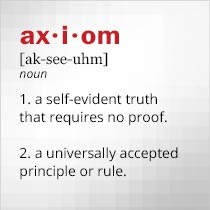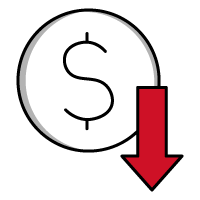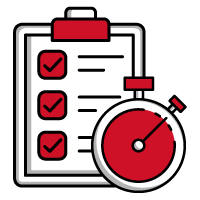Spectrum Analyzers Check 5G Occupied Bandwidth
July 02, 2021
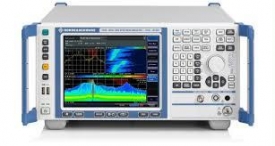 |
Mobile wireless communications were once considered a luxury but is now more than likely a necessity for many users requiring voice and data service. Cellular wireless technology has quickly evolved from analog Advanced Mobile Phone Service (AMPS) networks to digitally modulated Fifth Generation (5G) cellular wireless with signals extending from the RF/microwave spectrum well into the millimeter-wave (mmWave) frequency range from 24 GHz to above 60 GHz. Around the world, frequency channels are reserved for 5G use, with the assumption that 5G signals will have those frequency channels for exclusive use. When the channels are not exclusive, the additional signal energy can cause interference that degrades or obstructs 5G service, resulting in dropped calls and slow data rates. Fortunately, a spectrum analyzer can help locate the interference, even at mmWave frequencies, by performing occupied bandwidth (OBW) measurements.
Cellular telephone antenna towers attempt to provide uniform signal distribution to a growing number of global users, with 5G networks faced with the challenge compared to older generations of two different spectral regions: below 6 GHz and at mmWave frequencies. Signal energy from the towers is directed towards the horizon with some downward scatter and signal absorption making uniform signal distribution around the cell site difficult. The higher-frequency mmWave signals, with their short wavelengths, have much shorter propagation distances than the longer-wavelength, lower-frequency signals, requiring many additional smaller 5G base stations for effective mmWave frequency coverage.
Advanced antenna technologies, such as the use of active phased-array antennas like those used in military radar systems, generate directional signal beams that can be actively steered to users but 5G networks, with their ever-increasing numbers of users, require dense signal environments across wide signal spectrums. And interference can prevent reliable signal reception from a 5G base station. With a suitable spectrum analyzer, OBW measurements reveal the total integrated all signal energy within the bandwidths that concern 5G system designers, service providers, and users and when any interfering signals are at high enough power levels to be a concern.
Depending upon area and applicable telecommunications standard, OBW measurements typically relate to determining about 99% of the total integrated transmitted power in a frequency range of interest, such as a communications channel. 5G makes use of channels within frequency spectrum below 6 GHz but adds mmWave signal channels with wide bandwidth for high-speed data transfers. Such channels range from about 24 GHz to almost 60 GHz in frequency. OBW measurements look for the total signal power within a frequency range, such as a communications channel, essentially to see what is sharing the spectrum with the desired signals. The measurements involve finding the upper and lower frequency limits of the span in which the signal power is contained. Where 99% of the signal power is being measured, this involves determining the lower and upper frequencies of the range where the measured power is 0.5% of the total power for the frequency span.
Surveying the Spectrum
Selecting a spectrum analyzer for OBW testing is a matter of matching the equipment’s capabilities to the limits of the OBW measurements. An analyzer’s frequency range and amplitude range are good starting points for 5G OBW measurements, especially due to the needs for such wide measurement bandwidth for 5G testing, basically from almost DC through 60 GHz and higher. A suitable analyzer should offer an amplitude measurement range that can survive the higher-power (more than 1 W or +30 dBm) signals close to a 5G base station along with the sensitivity to detect the low-power signals at the edge of a 5G base station’s coverage area. An equipment’s sensitivity will depend on its own noise levels, with lower spurious and single-sideband (SSB) phase-noise levels enabling detection and measurement of lower-level 5G signal levels (as a function of a measurement antenna and any attached attenuation). Its acquisition bandwidth and sweep rates will also describe how quickly and effectively a spectrum analyzer can scan across a frequency range of interest, such as a 5G signal channel.
A useful equipment function is multiple-signal measurement capability, for OBW measurements within congested signal environments and in 5G coverage areas shared by multiple base stations. When comparing spectrum analyzers as candidates for 5G OBW measurements, it is important to remember that an equipment’s SSB phase noise is a function of the carrier frequency and the offset from the carrier frequency. Especially for the challenging test requirements for 5G mmWave signals in coverage areas with many closely located small base stations, low phase noise is important for differentiating multiple signals in the same frequency band. When comparing analyzers for low noise, the SSB phase noise typically increases with increasing carrier frequency and decreases with increasing offset from the carrier. Any comparisons between equipment should be for the same carrier frequency and offset.
Mechanically, larger, rack-mount spectrum analyzers may provide higher performance levels for indoor testing but lack the mobility of a battery-powered portable spectrum analyzer for drive-by testing in a 5G coverage area. The measurement of total integrated signal power within a specified frequency band for OBW testing of communications channels involves signals with different modulation formats, including frequency-division-duplex (FDD) and time-division-duplex (TDD) formats for 5G. So, any OBW measurements require demodulation and test capabilities to record the power levels of time-varying signals, such as real-time spectrum analyzers (RSAs).
Eying Examples
Since 5G infrastructure is in the process of being erected, spectrum analyzers provide the means of not only evaluating the channel characteristics of installed transceiver hardware but also checking on the presence of interference within the same operating bandwidth. While higher levels of interference are expected at sub-6-GHz frequencies, higher mmWave frequency bands are susceptible to higher-order harmonic noise from lower-frequency sources. Spectrum analyzers with wide bandwidths and high sensitivity represent powerful tools for optimizing 5G performance at sub-6-GHz and mmWave bands. As an example, the Tektronix RSA607A, is a compact laboratory real-time spectrum analyzer (RSA) capable of capturing 40-MHz-wide slices of bandwidth from 9 kHz to 7.5 GHz. It has a wide dynamic range and the low spurious levels and phase noise needed for high sensitivity. It draws its measurement power from a high-speed, 14-b analog-to-digital converter (ADC) that digitizes received signals at a rate of 112 MSamples/s.
When mobility is needed, the Anritsu Co MS2720T portable spectrum analyzer is available with frequency coverage as wide as 9 kHz to 43 GHz and can even include tracking generators to 20 GHz in that compact housing. It can perform on-site OBW testing as well as companion adjacent channel power measurements to determine when signal leakage from closely spaced 5G channels is excessive. The compact but versatile equipment runs for three hours on a battery charge and has a built-in power meter with available USB power sensors for power measurements to 26 GHz.
For spectrum analysis through 30 GHz, the Rohde & Schwarz FSVR30 can function as an RSA and a signal and spectrum analyzer. It is well equipped with sweep and Fast Fourier Transform (FFT) filters for isolating signals of interest across scanned frequency ranges and can capture bandwidths as wide as 40 MHz (acquisition bandwidth). For higher-frequency OBW measurements, the Rohde & Schwarz FSW85 signal and spectrum analyzer features an AC-coupled frequency range of 10 MHz to 85 GHz and a DC-coupled range of 2 Hz to 85 GHz. When equipped with an optional YIG filter and the filter is switched off, the measurement range can be extended further, to 90 GHz.
The Keysight N9040B, is an LXI class certified rack-mountable signal analyzer with available frequency ranges of 2 Hz to 8.4 GHz, 2 Hz to 13.6 GHz, 2 Hz to 26.5 GHz, 2 Hz to 44 GHz and 2 Hz to 50 GHz, with optional frequency extenders up to 110 GHz. Also equipped with swept and FFT filters, the standard analysis bandwidth is 25 MHz, but this powerful analyzer can be equipped with options that push the analysis bandwidth up to an amazing 1 GHz. When signal sensitivity is a concern, this analyzer can be equipped with an optional preamplifier with upper-frequency limits matching any of the analyzer frequency versions. For mobile, portable spectrum analysis, the Keysight Technologies N9961A is a member of its FieldFox analyzers, with measurement range of 9 kHz to 44 GHz.
These are just some examples of Spectrum Analyzers available to you. The right Spectrum Analyzer for your needs can be found by comparing the equipment’s capabilities to the limits of the occupied bandwidth measurements you need. For more information on these and to check out a variety of equipment from different manufacturers available for sale or rental, visit the Axiom Test Equipment (www.axiomtest.com) website.
Back to BLOG


